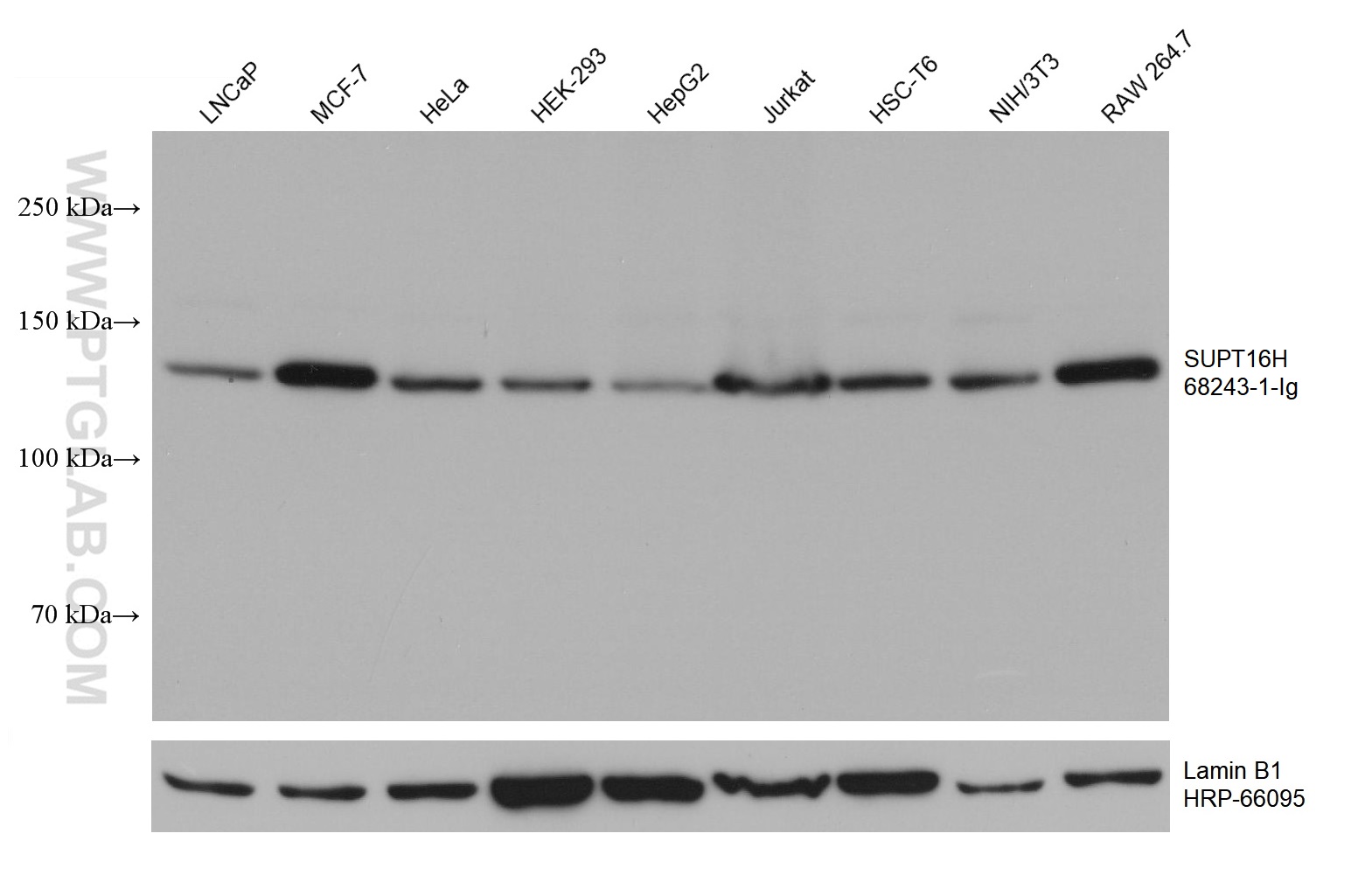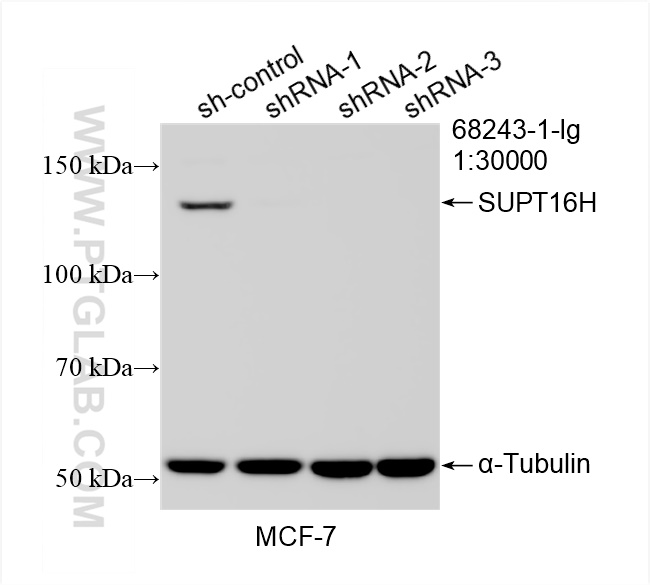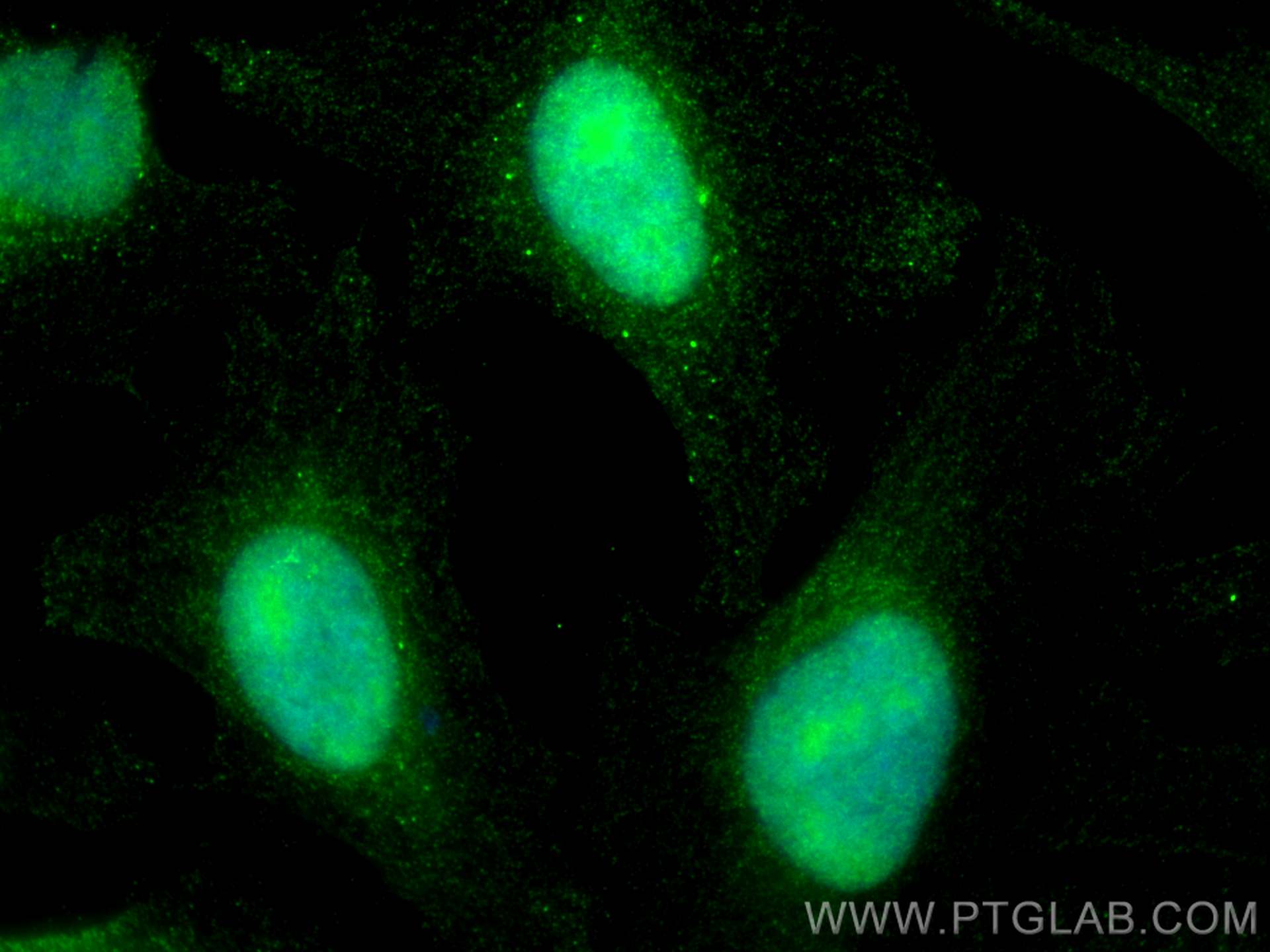验证数据展示
产品信息
68243-1-PBS targets SUPT16H in WB, IHC, IF/ICC, Indirect ELISA applications and shows reactivity with human, mouse, rat samples.
| 经测试应用 | WB, IHC, IF/ICC, Indirect ELISA Application Description |
| 经测试反应性 | human, mouse, rat |
| 免疫原 |
CatNo: Ag29459 Product name: Recombinant human SUPT16H protein Source: e coli.-derived, PGEX-4T Tag: GST Domain: 926-1047 aa of NM_007192 Sequence: EPEGEGSDAEEGDSESEIEDETFNPSEDDYEEEEEDSDEDYSSEAEESDYSKESLGSEEESGKDWDELEEEARKADRESRYEEEEEQSRSMSRKRKASVHSSGRGSNRGSRHSSAPPKKKRK 种属同源性预测 |
| 宿主/亚型 | Mouse / IgG1 |
| 抗体类别 | Monoclonal |
| 产品类型 | Antibody |
| 全称 | suppressor of Ty 16 homolog (S. cerevisiae) |
| 别名 | FACT140, FACT 140 kDa subunit, Facilitates chromatin transcription complex subunit SPT16, Chromatin-specific transcription elongation factor 140 kDa subunit, CDC68 |
| 计算分子量 | 120 kDa |
| 观测分子量 | 135 kDa |
| GenBank蛋白编号 | NM_007192 |
| 基因名称 | SUPT16H |
| Gene ID (NCBI) | 11198 |
| 偶联类型 | Unconjugated |
| 形式 | Liquid |
| 纯化方式 | Protein G purification |
| UNIPROT ID | Q9Y5B9 |
| 储存缓冲液 | PBS only, pH 7.3. |
| 储存条件 | Store at -80°C. The product is shipped with ice packs. Upon receipt, store it immediately at -80°C |
背景介绍
SUPT16H, also named as FACT140, FACTP140, SPT16 and CDC68, belongs to the peptidase M24 family and SPT16 subfamily. SUPT16H is a component of the FACT complex, a general chromatin factor that acts to reorganize nucleosomes. The FACT complex is involved in multiple processes that require DNA as a template such as mRNA elongation, DNA replication and DNA repair. During transcription elongation the FACT complex acts as a histone chaperone that both destabilizes and restores nucleosomal structure. It facilitates the passage of RNA polymerase II and transcription by promoting the dissociation of one histone H2A-H2B dimer from the nucleosome, then subsequently promotes the reestablishment of the nucleosome following the passage of RNA polymerase II. The FACT complex is probably also involved in phosphorylation of 'Ser-392' of p53/TP53 via its association with CK2 (casein kinase II). It also involved in vitamin D-coupled transcription regulation via its association with the WINAC complex, a chromatin-remodeling complex recruited by vitamin D receptor (VDR), which is required for the ligand-bound VDR-mediated transrepression of the CYP27B1 gene.





